This sword is a recreation based on the exhaustive analysis of a 15th century original example by Peter Johnsson. The original sword is a master-crafted work which is today preserved in the National Museum of Slovenia. Johnssons analysis of the sword demonstrated that its designer made extensive use of geometric principles to establish the dimensions and proportions of the sword in an all-around geometrically harmonic form. This was a practical way of establishing sound design principles in an age that pre-dated standardized measurements. A sword from Albions Museum Collection, this replica meticulously recreates the form, properties and handling of the original in every dimension. It has a blade of 6150 high carbon steel and its crossguard and pommel are cast steel and the wooden grip is skillfully bound in leather. A leather rain guard fitted at the guard completes the sword. Inlaid design has been carefully set into the blade. The last photo shows Johnsson in the act of documenting the original.
The sword N4516 is an unusually fine example of the sword smiths craft. It is masterfully made and an ingenious work of design in the Gothic tradition.
A versatile long sword like the N4516 was effective in cuts against unarmoured targets and excelled in thrusting. Its sturdy blade is well suited for half-sword techniques and the massive pommel may be used as a club. The angle of sharpening is some 30 degrees, making for an edge that is both acute and resilient.
Even with a rather hefty weight of 1650 grams, the N4516 is an supremely agile and responsive weapon as a result of a well adjusted distribution of mass.
The markings on the blade – a dagger shape and one often described as a unicorn – have also been found on other examples from the very late 14th century and early 15th century – notably swords XXa.1 and XVa.2 from Oakeshott’s Records of the Medieval Sword.
You can tell it was made by some of the best craftsmen of its day. There is an economy in form and expression that does not take away anything of its power of presence. Rather it makes its character come out even stronger. The shape is stark and graceful with something very essential about it. It is close to the ideal idea of what a sword of this kind should be. – Peter Johnsson


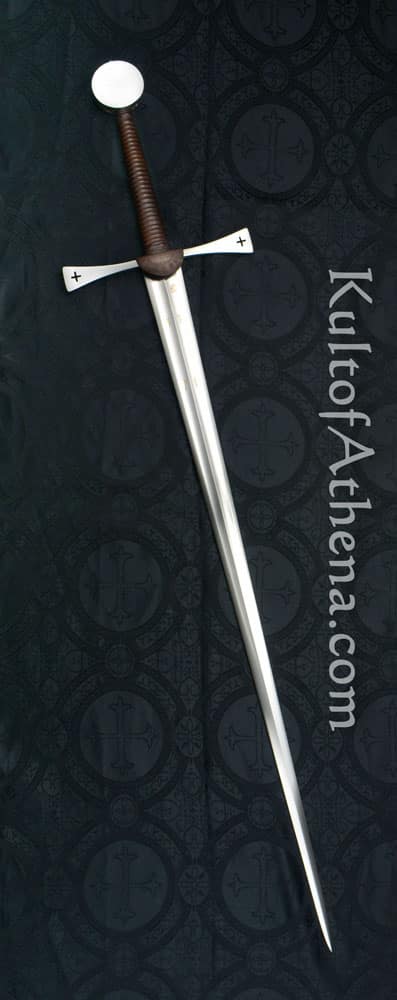
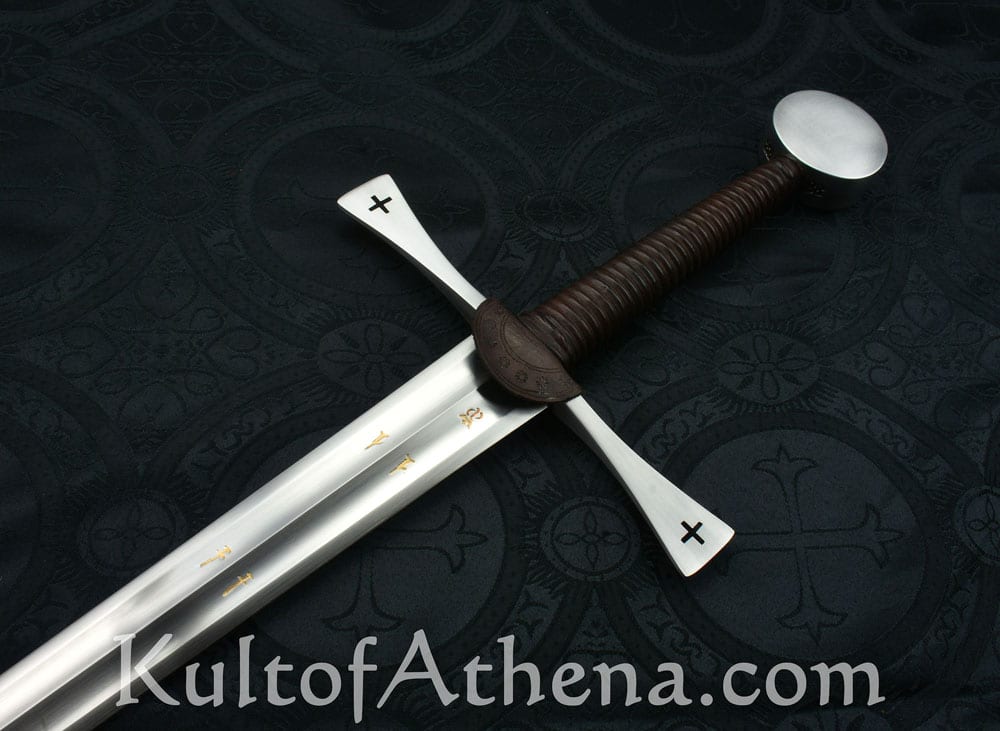

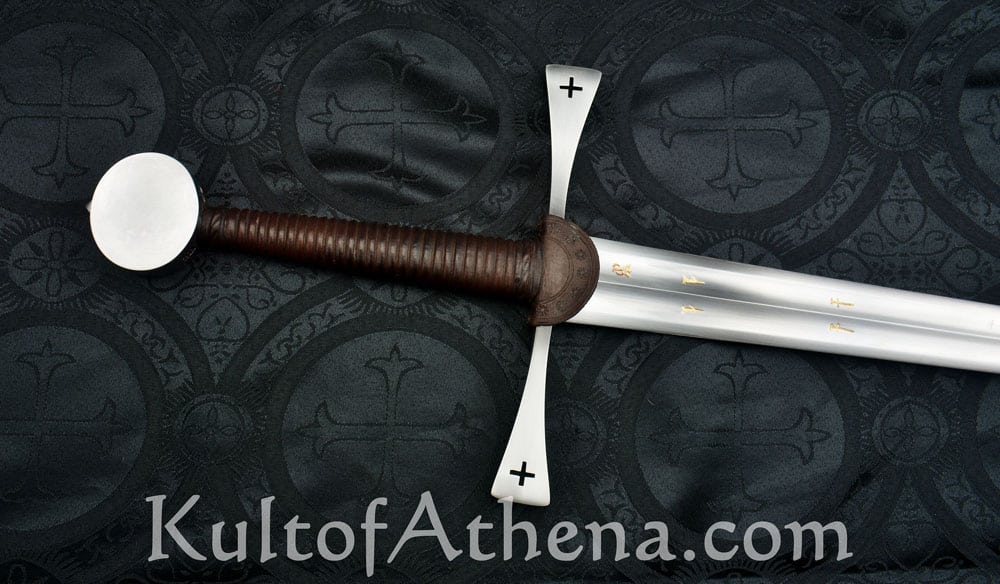
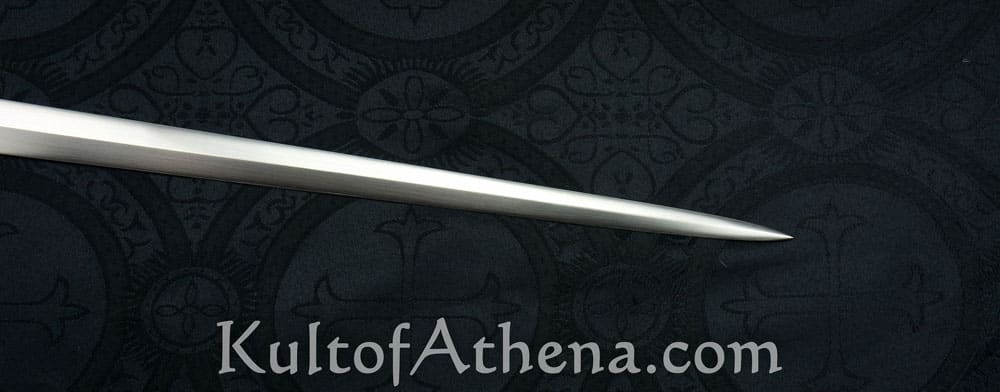
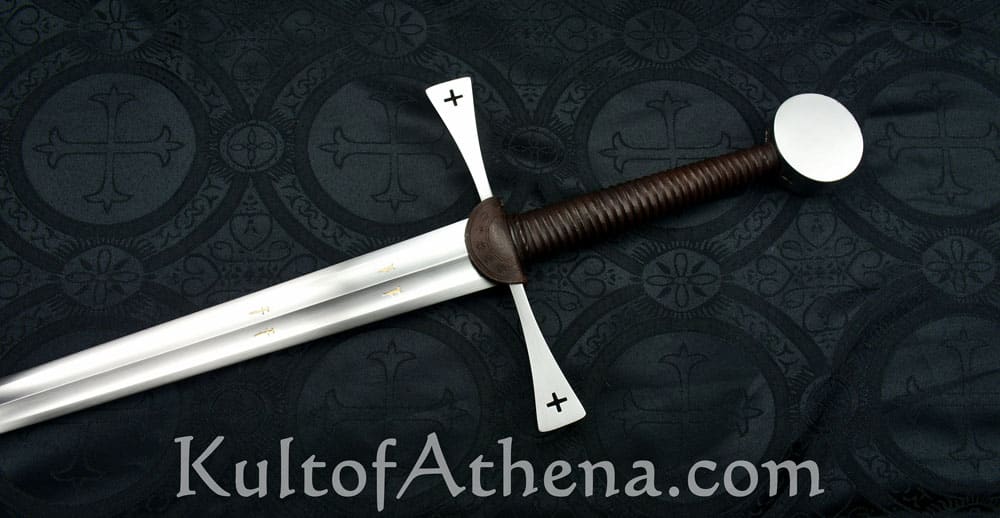
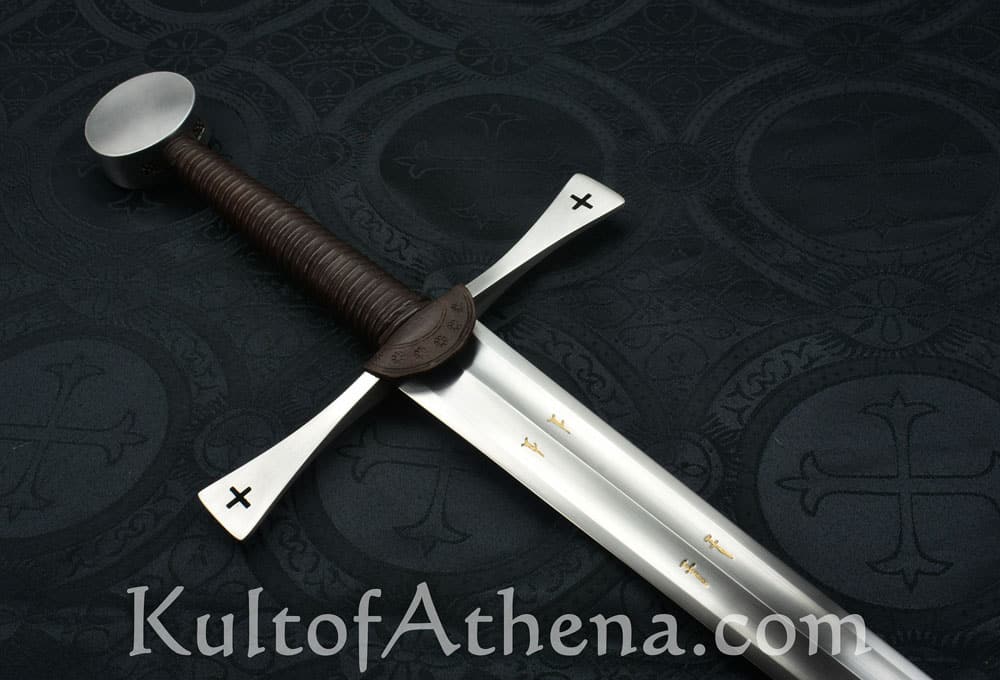
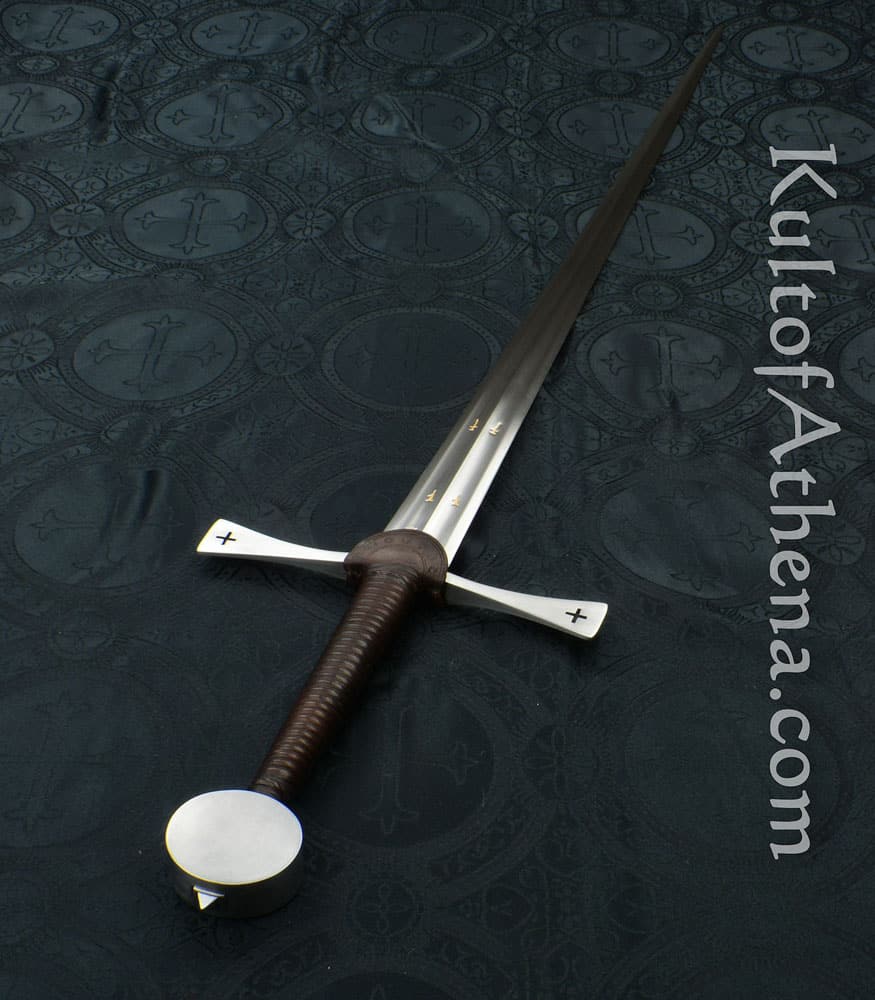
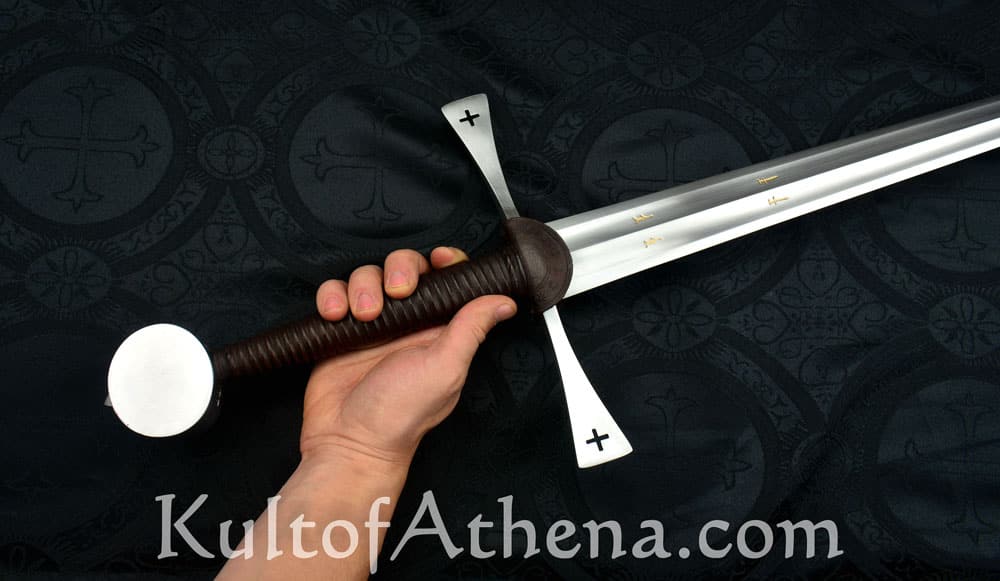
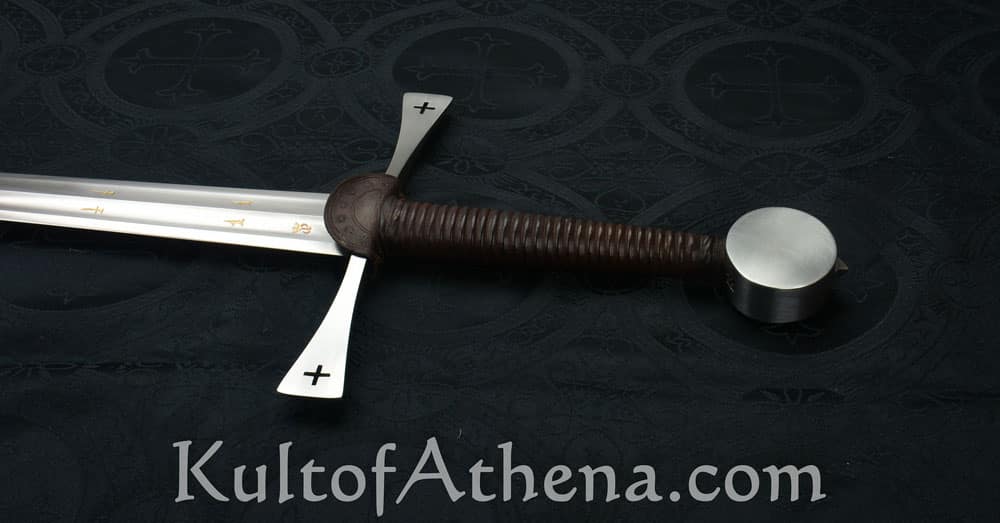
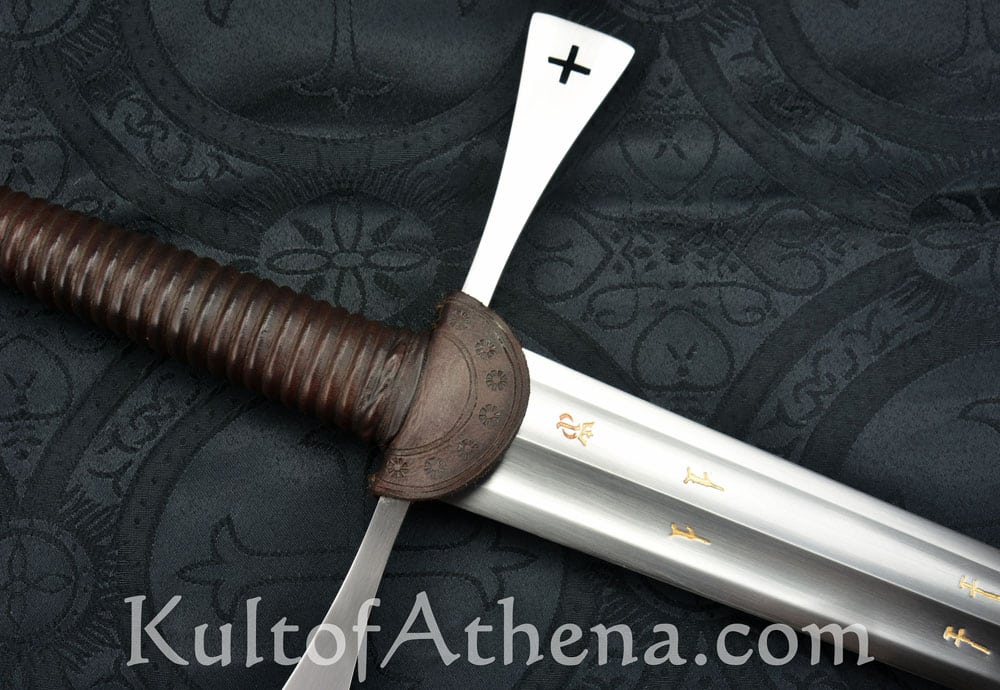
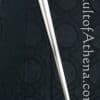
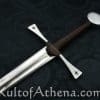
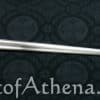
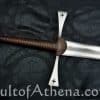
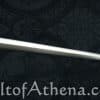
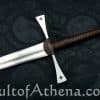
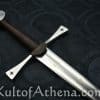
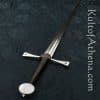
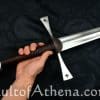
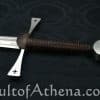
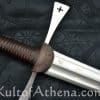
Mike –
The Ljubljana is the most beautiful piece in my collection, an expertly designed work of art. It’s a supremely lithe, nimble and agile longsword. The massive wheel pommel acts as a counterweight to balance out the slender double hollow ground type XVIIIb blade, which tapers from just under two inches at the widest section into a deadly needle like tip at the point.
The distribution of mass is perfect and naturally gives the sword a lot of authority in both the trust and the cut. At about 3 3/4lbs and 45 1/2” long, you might be tempted to think it would be impractically heavy for such a finely tapered blade. Yet the weight is distributed evenly enough along the lengthened grip so that; with the counterweighted pommel, you get an incredibly powerful fulcrum; and completely accurate control over the tip.
Even in one hand the blade still feels lighter, and the tip more controllable than a lot of arming swords I own which weigh less than the Ljubljana, simply because of how well the weight is distributed in comparison. When in motion, the tachikaze it makes is just incredible, you can hear the blade whistle effortlessly through the air like music when you have good edge alignment, and everything is so tightly fitted together and peened that the sword rings like a dinner bell when you strike something with it.
As far as fit and finish go; it’s standard Albion museum line quality- and that is to say it’s phenomenal. It came exceptionally sharp right out of the box. There are absolutely no ripples in the metal and the blade is completely straight; the edges are completely even and so is the central ridge. The double fullers are so level and precise it’s hard to believe they were done by hand; and the blade tapers to an extremely fine and articulated point. The gold inlays on the blade were neatly done and give the sword a little extra swagger in the right light. The Greek crosses on the cross guard are beautifully done, and so are the Irish clovers on the top of the pommel. The spiked peen block at the bottom was almost perfect, aside from minor pitting on one side, but this is purely cosmetic and almost unnoticeable. The leather wrapped grip is very comfortable, and slightly oblong giving you surprisingly good tactile control over your edge alignment. The ridges on the grip also give your hands a lot of purchase on the handle, it feels very secure in your hands. My only complaint is that the stitching underneath the rain guard could have been done a bit more neatly but that is very minor as well.
I haven’t seen any reviews at all for this sword anywhere on the internet so I hope this helps someone out there who’s considering buying one or who was just curious.
Robert –
I had admired the sublime geometry of Peter Johnsson’s blacksmithing work for some time, and finally, couldn’t take it anymore and went ahead and bought what in my opinion, must be the most beautiful sword on the planet. With a custom scabbard, this set me back somewhere in the high threes US, and I’ve waited (impatiently) about a year for it. Even a museum replica like this is a work of art, hence I have been careful not to abuse it once it arrived, and if you are keen on cutting, unfortunately, I cannot comment on its abilities. But sharp it certainly is.
What I can tell you, is that the Ljubljana is the nimblest and best-balanced sword I have ever touched. It feels like an oversized dagger rather than a sword. The ease and speed with which it can be pointed on target are stunning, even with one hand. The heft on paper is non-existent when handling it. Yet it gives the sword great stability. Aimed, the tip will not move, the point stays on target as if magnetically attached to its position in space without any effort or strength required by the swordsman. Compared with this piece, everything else suddenly falls short. Even those (Albion) swords I had held in high regard before. I just didn’t know what I was missing, what a thrusting sword should feel like.
I would compare this to a Mercedes-Benz SL Gullwing, or the Herreshoff schooners that won the America’s Cup in the twenties. Or a McLaren F1 from the Nineties. Products that are so superior to anything else in their time, that they become instant benchmarks and collectibles. It’s a mystery to me why this sword is so little commented on here, perhaps it’s the price, but given its ability and beauty, and historicity, the price seems justified. The only negative is that the grip is short – it’s just enough to qualify as a hand and a half grip – and I’m always a bit tempted to use it in a single-hand capacity. Thank you, Peter Johnsson, for recreating this marvel